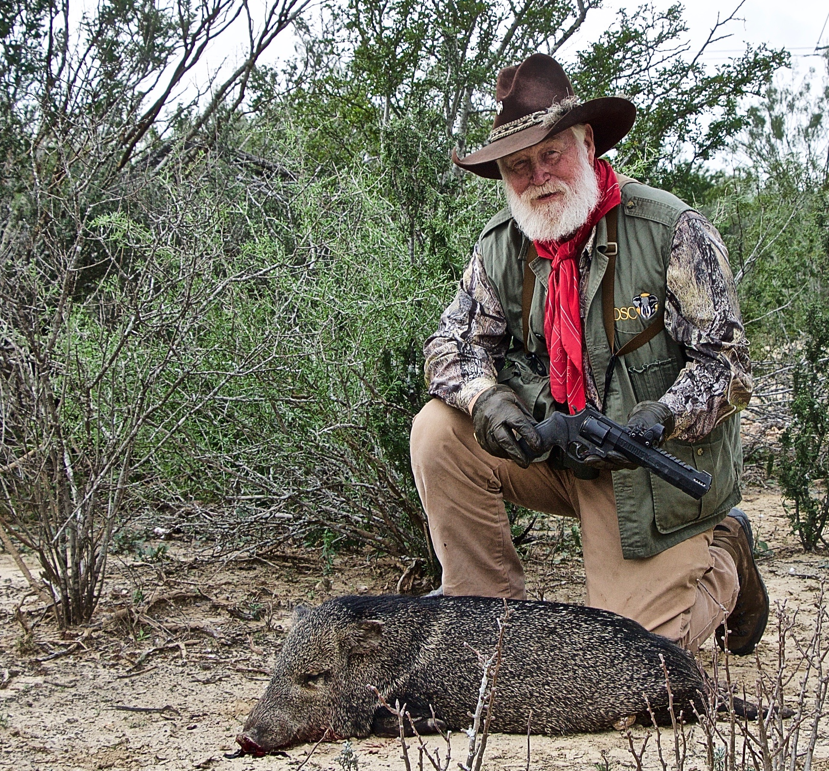By David Price
The Canadian island province of Newfoundland is the only place in North America that has a huntable population of woodland caribou. If you want to play the woodland caribou game, then you have to hunt Newfoundland. My first and second hunting trips to Newfoundland resulted in exciting hunts where I killed two quality moose on the first day of hunting. My second moose hunt was an accidental encounter – I booked a caribou hunt, but got another moose tag through an administrative mix-up. Both hunts were with Horace Lane and his RiverRun Outfitting group, and I took the first bull with a rifle and the second bull with archery gear.
I arrived in Gander during a driving rainstorm. Gonzo Gillingham, Lane’s head guide, met me and another client at the airport, and it took me a day to decipher his Newfie accent and slang. Quickly I figured out that he wanted me to throw my gear in the back of his truck so we could get to the lodge in time for supper. Gonzo’s brother, Gwynn, was the chief cook and occasional guide, but his culinary offerings were so salty and over-cooked that I took over cooking duties. I’m good at cooking southern food, and I earned the eternal gratitude of the other guest and guides after relieving Gwynn of his duties.
The next morning we ate breakfast, zeroed our rifles and got our gear together to hunt. My Weatherby .300 was right on target shooting 180 grain Nosler partition bullets and my guide, Trevor O’Neil, and I discussed strategy for the week. Our plan was to drive out to our hunting area near Mt. Peyton, hop on ATVs for a ten mile ride on logging roads then hunt on foot looking for caribou on the move. Trevor said the caribou should be moving in bachelor groups, cow and calf groups and a few mixed groups on the fringe of the woods and out in open tundra. We’d just have to push the bush looking for animals as they presented themselves. It sounded simple in theory. Trevor was a savvy guide and an experienced woodsman, logger, hunter and trapper. I’d hunted caribou in Alaska and Quebec, but I knew relatively little about woodland caribou and I followed his plan to the letter.
Our first morning was overcast, rainy and cold. We parked the ATVs at the trail head and struck out across the bog on foot. The surface looked solid, but it covered a soupy mix of tea-colored water, decomposed leaves, grass and marsh mud. Walking across the stuff is slow going with each step placed deliberately on the next clump of marsh grass ahead. Sometimes it’s like walking on a mud-covered trampoline. We saw caribou immediately – two young bulls who were more curious about us than they were afraid. We chuckled as they bounced stiff-legged through the swamp and disappeared over a small hill.
As we crested the hill it started raining harder. At the top of the hill, the landscape opened up to a large plateau with foothills rising up to Mt. Peyton on the horizon. We saw several groups of caribou, but we couldn’t tell if they were bulls because of the distance. We trekked south toward the largest group and made our way to the fringe of the trees to pick up some cover and concealment. We traveled in and out of the trees and across tundra streams looking for mature bulls, but all we found were cows with calves. We walked in the light rain for several hours until the rain turned to freezing drizzle then full-blown sleet. We called a halt, built a fire to warm up then put on our rain gear – a life saver for fall hunts in Newfoundland. As we enjoyed the warming fire the sleet turned to snow which descended in quarter-sized flakes.
After we got back on the trek, a flock of grouse flew out of the trees and landed about 20 feet in front of us. I broke out my camera and took off after them to get some photos. As I followed the birds over another small hill they disappeared, but I cut the tracks of a band of caribou. I showed them to Trevor who said they were bulls and he suggested that we follow the tracks to see if any of them were shooters. We went 100 yards when we crested a small hill to find the bulls feeding 100 yards away. We glassed the bulls while out in the open bog and I saw a white bull with a long mane and a tall rack of antlers. He looked good to me, but Trevor pointed out a dark bull standing alone on the left side of the herd – he was the best of the lot. I centered my scope’s cross hairs on his shoulder and squeezed the trigger. He crumpled at the shot and lay dead where he’d stood while the other bulls sprinted madly for the trees. Trevor slapped me on the back and said, “Good shooting boy!”
We walked down the hill to the bull, and he looked better with each step. He had good tops, modest bez on the left, good bez on the right and double shovels. He had a wide shovel on the right, but his left side was a long spike that flattened out like a butter knife on the end. He had a dark brown coat and a long white mane, and I was amazed at his body size which looked similar to Quebec-Labrador caribou. The smaller palms, points and shovels of his antlers showed that he was a woodland bull, and I was really pleased with another first day Newfoundland trophy.
We spent the remainder of the day skinning and quartering the animal. We cached what we couldn’t carry in the trees and prepared for the long hike across the open tundra to the trail head. It started snowing and we soon found ourselves in blizzard conditions. The temperature dropped 20 degrees and the wind gusted to over 20 miles per hour. If we didn’t get out of the open soon we’d find ourselves in the primary zone for hypothermia. We were hungry, tired, cold, wet and our clothes were freezing to our skin – a perfect recipe for disaster. I looked at Trevor and said, “Let’s get out of here before we freeze to death!” He led the way and we made it back across the tundra just before “white out” conditions engulfed us.
Horace met us at the lodge. He was excited about my trophy, but happier that we’d escaped the blizzard and made it back to safety. The next morning was clear, cool and sunny. It was tough going through the bog on ATVs but we made the round trip in two hours. My third hunting trip to Newfoundland was in the books – three trips and three trophy animals all taken on the first day. I was two thirds through my quest to complete the “Newfie Slam.” All I needed to do was to come back and hunt black bear and Lane wanted to know when I could come back to RiverRun to hunt.
Having finished my hunt early in the week, Horace suggested that we do a little sightseeing. First, he took me to a small fishing village, Twillingate, north of Lewisporte. We sampled the local hospitality, ate the locally caught sea food, toured the maritime museum and walked around the light house on the rugged coast. With winter’s approach, the coastline of northern Newfoundland was awash with huge surf. Waves from the Labrador Sea bashed the rocky coast and sent sea foam and spray in our faces as we scrambled along the rocks below the light house. The next day we made the long trip to the northern tip of the island to visit L’Ans aux Meadows where the Vikings landed in the early 11th century. I was impressed to roam the ground where the warlike Norsemen, the first Europeans to reach North America, established a settlement.
The week ended too soon! I was ready to come back in the spring to hunt black bear. Newfoundland has a long, rich history, and the culture is a colorful mixture of English, Scottish, Irish and other nationalities that have blended together to make the island’s culture unique. Horace Lane and his staff run a great hunting operation. His guides are knowledgeable and friendly, the Bear’s Den Lodge is comfortable and has all of the amenities required for traveling hunters. Game is plentiful in Newfoundland: the island’s moose population is thriving and strong as is the black bear population. Woodland caribou numbers are down in recent surveys – the causes for the decline remain an on-going research study, but in the area where I hunted I saw plenty of healthy caribou. I’ve booked my spring bear hunt and Horace assured me that there are plenty of big bruins in his hunting area. Lane and his staff saddled me with the “Mr. First Day” nickname, but I don’t see how my incredible luck will hold, but that’s another story.
Please come back for part three of David’s “Newfie Slam” soon!



